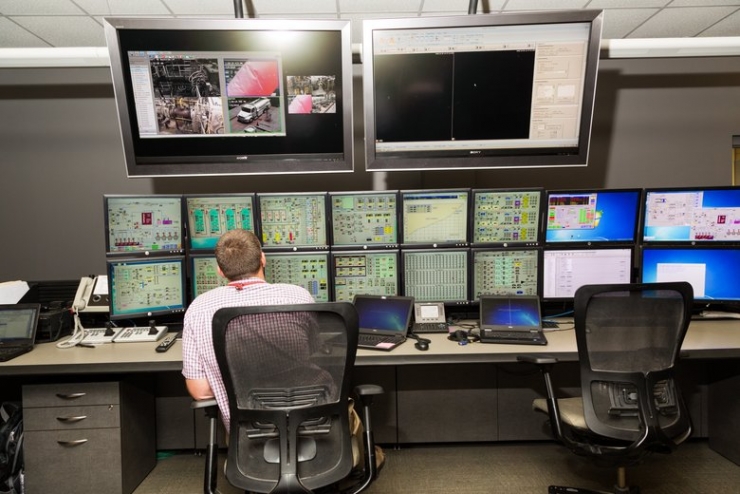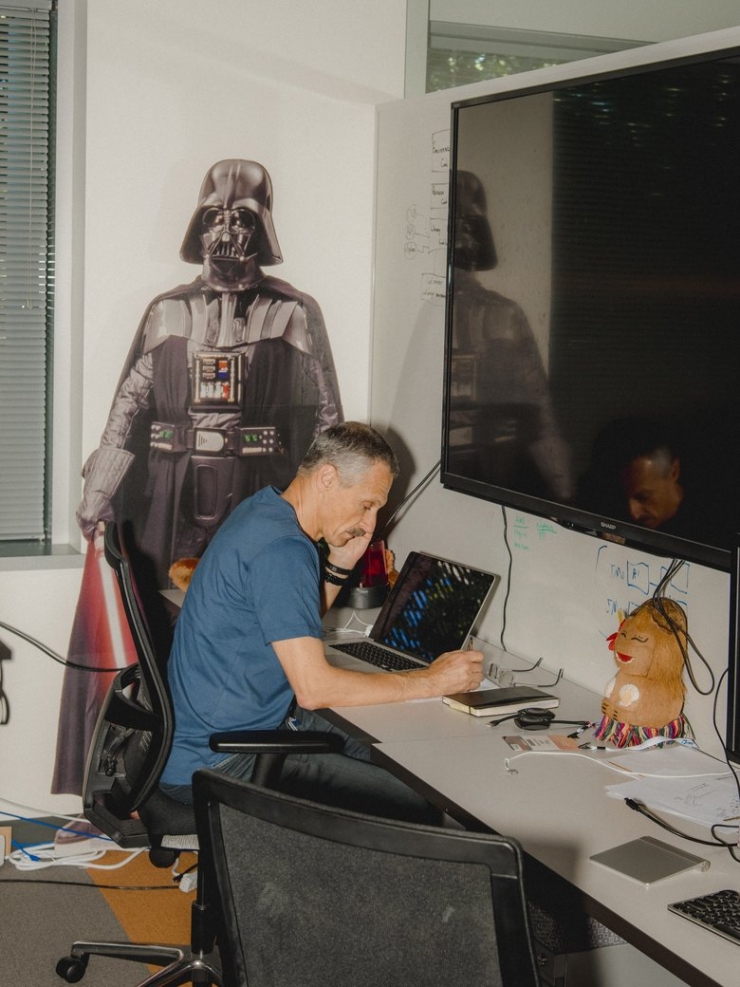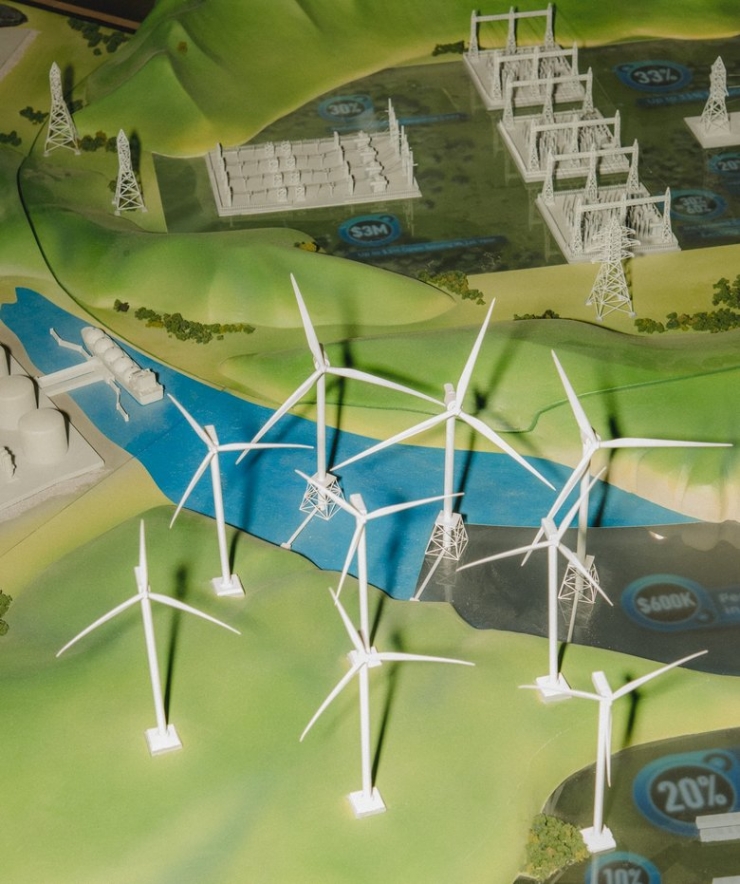Editor's Note: When Thomas Edison merged Edison Electric Company and Thomson Houston Electric Company into General Electric (GE) in 1892, nobody would have thought it was the only one since the establishment of the Dow Jones Industrial Index in 1896. The company is still on the index list.
When we talk about GE, we always associate it with various heavy industrial equipment. From the aircraft engine, power generation equipment to plastic, its figure can be seen everywhere.
Today, GE is trying to cast aside the stereotype that was originally left to everyone and transform it into a company that focuses on software development.
No Plan B
When asked why GE was on the path to transformation, CEO Jeffrey Immel recalled a normal working day in June 2009. Although what happened on that day was not the inspiring Mars, Immel was filled with emotion.
At that time he was talking to GE scientists about the new jet engine they produced. This sensor-filled device generates a batch of data for each flight - but then?
If it cannot do more, the future value of these data may only stop at the machinery itself. GE cannot use it.
"We need to strengthen our software capabilities," Immelt said in his decision. Perhaps GE, the company that has been manufacturing turbines, jet engines, locomotives and medical imaging equipment, will face competitors like Amazon and IBM.
Let's put the clock back in 2009. At that time, GE had just escaped from the global financial crisis. It was a return to the foundation of heavy industry, and the brave man took away most of the business of GE Capital, a bloated financial institution. This process lasted for several years and GE sold billions of dollars in assets. This summer, GE Capital was finally removed from the government's "big, but not down" list (because the scale is too big and the government will die anyway) - this means that GE has taken another hurdle.
In 2011, GE quietly set up a software center located in San Ramon, California, 24 miles east of San Francisco.
Today, one of San Ramon’s most important projects is to develop a large computer operating system for the company. It will be Microsoft Windows or Google Android in the factory world. The project is at the heart of the GE Drive, and as Immelt said, GE will be among the “Top Ten Software Companies†by 2020.
However, senior people in Silicon Valley are skeptical.
Technology entrepreneur Thomas Siebel, now the CEO of C3 Internet of Things, a startup company working for GE, said:
"GE is trying to achieve this goal with the Qian Haihai tactics of large companies, but their origins are not software."
The San Ramon complex is GE Digital's home with 1,400 employees. The building's design style is in line with the software developers' free range of work: open floor, bench, white board, couch for impromptu meetings, balcony overlooking the courtyard, and kitchen area with snacks.
Many industries see the digital threat. However, as a company with 124 years of history and the largest manufacturer in the country, with more than 300,000 employees worldwide, the difficulty of the GE challenge has grown exponentially. The employees of the company are immersed in the technical introduction of San Ramon and are absorbed in GE Digital's culture . They flocked to visit and learn just to make the GE industry catch up with Silicon Valley digital technology and a fast pace of work.
Immelt believes that GE's success or failure will depend on this change in the next decade. He calls it "This is probably the most important thing in my career doing."
Either all or none. "This is a road without Plan B."
The next battlefield
In the industrial world, under the so-called "Internet of Things" or "Industrial Internet," it is actually a digital technology era where cheap sensors, powerful computing and intelligent software are piled up. When the company strives to develop a quality software layer that can connect machines, it will be the next battlefield.
It is expected to become a huge new product market, improving the services and efficiency of industries such as energy, transportation and health care. GE executives and analysts predicted at a recent meeting that the Industrial Internet cake will reach US$22.5 billion in 2020.
One of the main applications of the Industrial Internet so far is predictive maintenance. The software analyzes the data generated by the machine and identifies the warning signal before it strikes (indicating that it needs to be repaired).

Since machine sensors can superimpose large amounts of old and new data, the amount of data will be explosive. GE estimates that by 2020, the amount of data generated by machines will jump by a factor of 100. If such data is available, GE will ensure more detailed analysis. In this way, GE can not only sell the machines to customers, but also sell some commercial results like "saving fuels." Immelt thinks this is like moving to the upstream of the industry chain.
However, all this has exposed GE to a new competition: in addition to traditional competitors such as Rockwell Automation, Siemens, and United Technologies. There are also high-tech giants including Amazon.com, Cisco, Google, IBM, and Microsoft, as well as a group of start-up companies waiting in the wings.
Of course, other industries also have troublesome precedents. Google and Facebook transformed media and advertising, Amazon redefined the retail industry, Uber applied a brand new business model to taxi, which has not changed much in the time of several generations.
Karim Lakhani, a professor at Harvard Business School, said:
"The real threat is that data and analytics become more valuable than installing the device itself. GE has no choice but to rely on its own."
Let engineers change
Recently, GE has begun to attract software engineers and data scientists from Amazon, Apple, Facebook and Google. But early on, it simply hired people. Last year it began to run television ads on its own, and hired young employees to change the company image of "industrial giants + digital dwarfs." (The company said that GE Digital’s application jumped 8 times.)

Until this year, Darren Haas has not considered joining GE. GE is kitchen appliances and light bulbs for him. However, after meeting with Harel Kodesh, he was attracted. Harel Kodesh is an expert in mobile and cloud computing. He has led teams at Microsoft and VMware and is one of the creators of data center software.
About two years ago, Kodesh joined GE and currently serves as CTO.
This level of people Kodesh joined GE, attracted the attention of Haas. Then , Haas began to realize the role of GE's equipment in various areas of the world. He said: "I found that this is really, really attractive."
Another discovery of Haas of 41 is that attraction is the biggest computational challenge the company will face in the future. He was a member of the founding team of Siri, a speech-based digital assistant company acquired by Apple in 2010. When leaving Apple, Hass was the head of cloud engineering, managing the computing engines of Siri, iTunes, and iCloud.
In May, he jumped from Apple to GE. At GE Digital, Hass also has a similar title, leader of cloud engineering platform - but this is in a very different environment. He described his work as: Application of modern software technologies, including machine learning, artificial intelligence and cloud computing to the industrial field.
He said: "I have found my favorite job."
Hass is currently responsible for Predix, GE's software strategy core product. Its evolution reflects GE's software ambitions.
The growth of concepts
The starting point for Predix is ​​slightly higher than the software brand GE uses to service its gears. The application that best reflects its advantages is predictive maintenance in jet engines, saving downtime. In 2013, William Ruh, the former general manager of Cisco Systems, joined the team and combined the San Ramon Software Center and began to extend Predix to apply it to GE's other industrial companies.
But soon they felt the threat. The problem is "outside interference," Ruh said. Take the online new company Airbnb as an example. Such opponents seem to be able to emerge from anywhere and bring about greater productivity—but do not possess the assets they match. "Ruh said GE is a super boss.

Another threat is that technology companies are increasingly interested in the Industrial Internet. In order to go beyond this, GE re-imagined Predix as an operating system for cloud-based industrial applications.
Kodesh is responsible for this work. He is approaching imminent rivals: Amazon Web Services, Google, Microsoft and others. Kodesh said:
" These companies are all eyeing. We choose to surrender, or do we do something like Predix?"
The basic idea of ​​GE is that companies and external software developers will write programs that run on Predix. For example, monitoring the operation of health and fine-tuning equipment, such as oilfield drilling rigs and wind turbines, improves performance, reduces wear, and adapts to changing environmental conditions. It is equivalent to software that provides personalized medical services for machines.
GE has some primary advantages and its installation base is huge. For example, more than a third of the world's electricity is produced in GE's equipment. By winning aircraft manufacturers, oil companies, hospitals and utilities that now rely on GE machinery, it can be easily upgraded.

GE is starting to attract developers. For example, Tata Consultancy Services, it now has 500 programmers and develops Predix applications for customers in the power design, aerospace, and healthcare industries. GE also strengthened its partnership with Infosys, Wipro and Capgemini to help companies write Predix software.
Ruh joined GE in 2011. He does not fantasize about the advantages of making software a heavy industry company. At the time, he told Immelt that it would be "a 10-year journey. " "This trip is only half way." But no matter what, they are trying to change the engineering culture that has extended for generations.
“If GE wants to become a digital industrial company, we cannot separate from other departments,†Ruh told his software division: “ Tools and habits need to be embedded in people's work .â€
Via:The seattle times
Recommended reading:
GM and Lyft test auto-driving taxis to hit cars and cars just around the corner!
To help you, general-purpose and NASA labor-saving gloves intended for civil use
Ip20 Indoor Power,Led Strip Lamp Driver,Indoor Led Strip Lamp Driver,Ip20 Led Strip Lamp Driver
Jiangmen Hua Chuang Electronic Co.,Ltd , https://www.jmhcpower.com
